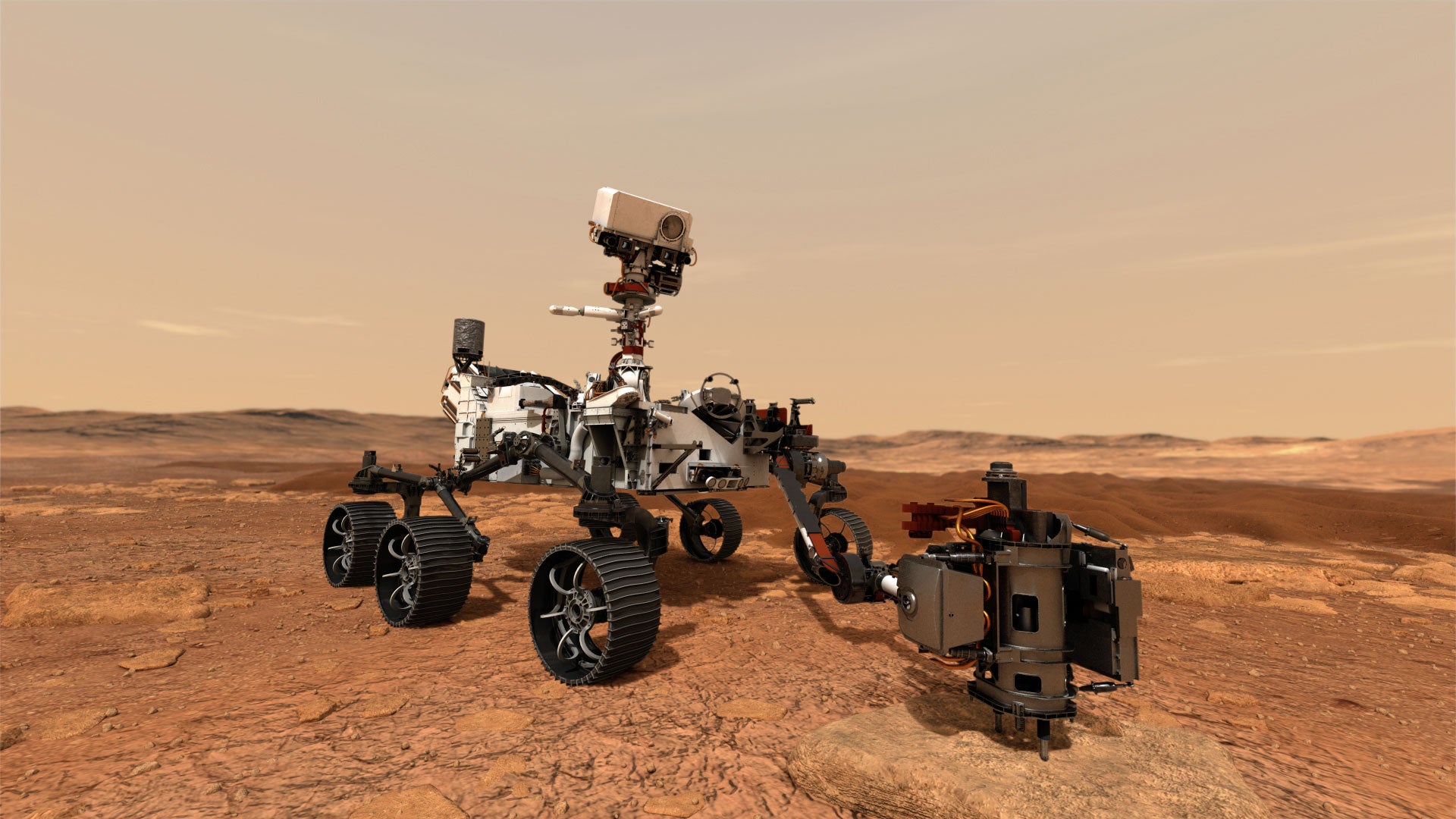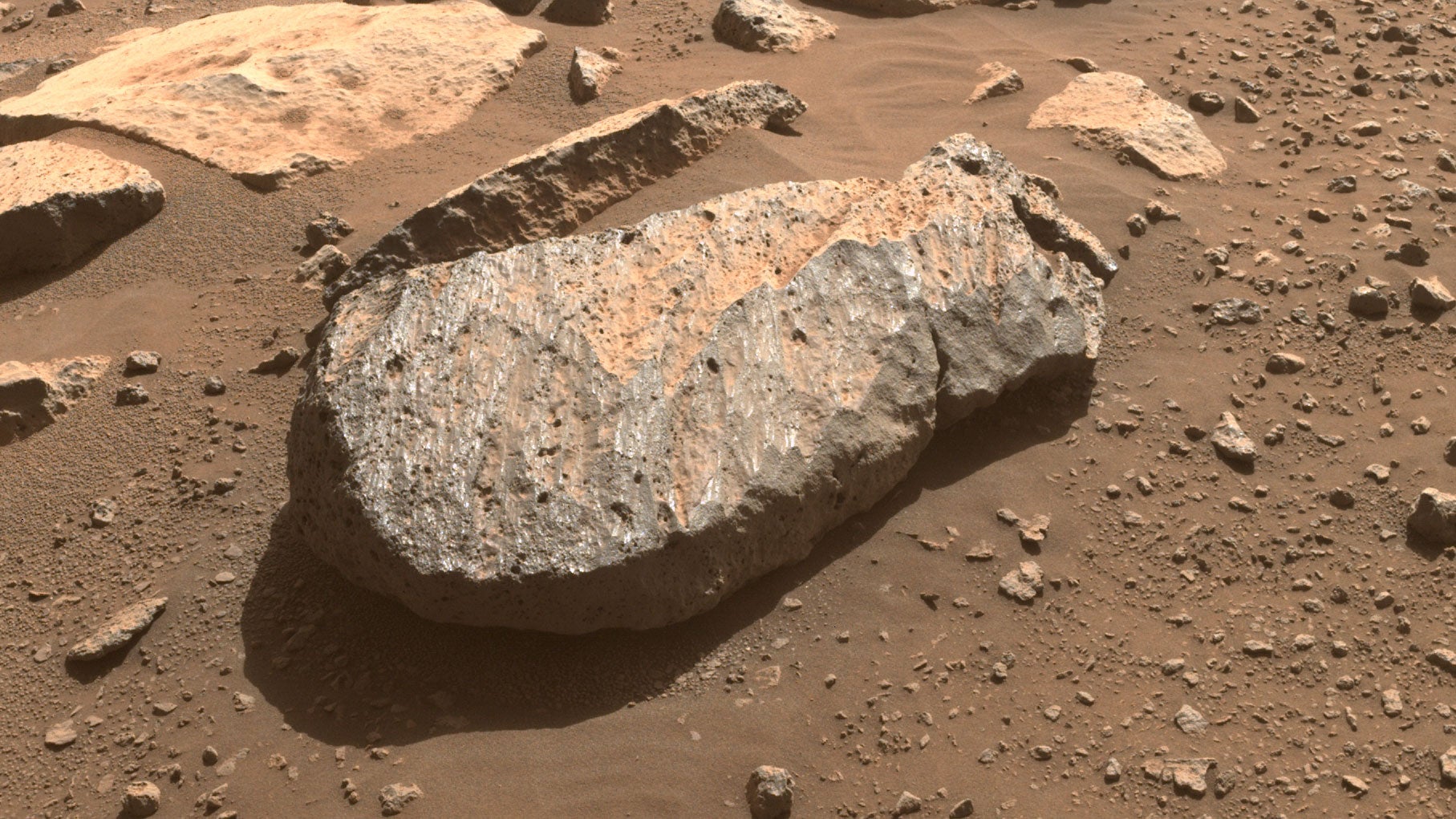Nasa to drill into Mars again in search of life – after Perseverance rover’s first rock sample strangely disappeared
The sample rock, ‘Rochette’, is thought to be more resistant to erosion and therefore stronger than the first sample, which disintegrated before Nasa could capture it

Your support helps us to tell the story
From reproductive rights to climate change to Big Tech, The Independent is on the ground when the story is developing. Whether it's investigating the financials of Elon Musk's pro-Trump PAC or producing our latest documentary, 'The A Word', which shines a light on the American women fighting for reproductive rights, we know how important it is to parse out the facts from the messaging.
At such a critical moment in US history, we need reporters on the ground. Your donation allows us to keep sending journalists to speak to both sides of the story.
The Independent is trusted by Americans across the entire political spectrum. And unlike many other quality news outlets, we choose not to lock Americans out of our reporting and analysis with paywalls. We believe quality journalism should be available to everyone, paid for by those who can afford it.
Your support makes all the difference.Nasa’s Perseverance rover has drilled into its second rock with a view to collecting samples, after the first one strangely went missing.
The space agency has chosen the rock “Rochette”, located on a ridge called “Citadelle” near the Jezero Crater on the Red Planet, for examination. A drilling tool on the rover’s two metre-long robotic arm will sink into the rock and transfer material into a capture tube that is only slightly thicker than a pencil.
The Citadelle ridge is capped with a layer of rock that seems to be resistant to wind erosion, which means it’s likely the rock will endure the pressure of drilling. This is a vital quality as Nasa’s previous attempt to retrieve a sample resulted in an empty tube.
Engineers were initially confused about how the sample could have disappeared, but later concluded that the sample was unusually soft and most likely got stuck in the hole.
That first tube will not go to waste; despite it containing no rock, it is a perfect sample of Mars’ atmosphere.
“By returning samples to Earth, we hope to answer a number of scientific questions, including the composition of Mars’ atmosphere,” said Ken Farley, Perseverance’s project scientist at Caltech. “That’s why we’re interested in an atmospheric sample along with rock samples.”
For this new attempt, however, Nasa added an extra step to the sampling process: after using its camera to check the sample tube is filled, the rover will pause the sequence so the ground team can review the image to double check it is present. Perseverance will seal the tube once that confirmation is made.
Rochette is not as old as some of the other rocks on Mars, but that will help Nasa put together a more accurate timeline of the planet. “There are potentially older rocks in the ‘South Séítah’ region ahead of us, so having this younger sample can help us reconstruct the whole timeline of Jezero,” said Vivian Sun, one of the mission’s scientists at Nasa’s Jet Propulsion Laboratory in Southern California.

Nasa hopes Perseverance will help it discover evidence of extra-terrestrial life on the planet. The Jezero Crater was once flooded with water and was the location of an ancient river, scientists believe. The evidence of water makes it more likely that microbial life could have existed there.
The geology of the crater is also vitally important. Sedimentary rocks like sandstone and limestone have a better chance of preserving biosignatures than igneous rocks formed from volcanos.
Nasa intends to collect about 35 samples that will eventually come back to Earth via a future craft.
Join our commenting forum
Join thought-provoking conversations, follow other Independent readers and see their replies
Comments